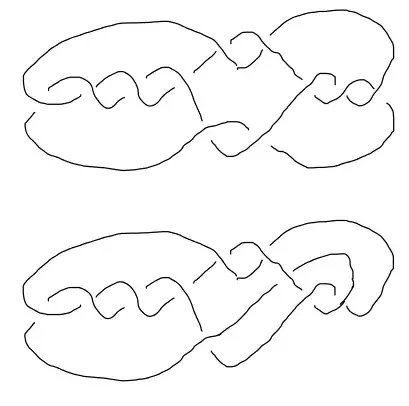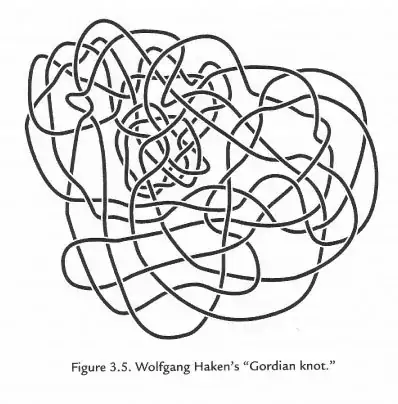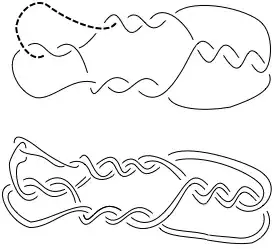It is well known that knot diagrams cannot be monotonically simplified using Reidemeister moves. For instance, the Goeritz unknot cannot be directly simplified. On the other hand, there is a stronger move that 3-manifold topologists sometimes use, called the "under move": take a section of the knot that has only under crossings, and replace it with another under-strand connecting the same two endpoints. We can use this to simplify the Goeritz unknot one step:

Question: Can every diagram of the unknot be monotonically simplified using only under moves (or maybe under and over moves)?
Probably one needs to allow level moves as well.
This is related to an earlier question: Are there any very hard unknots? My move is more precise than that one, and Haken's "Gordian knot" can be simplified at least one step using a few level under-moves and then a reducing under-move on the right-hand side.
(I was wondering about this during a talk by Prasolov on his amazing work with Dynnikov on similar questions in the context of grid diagrams. Surely someone has considered this before.)

